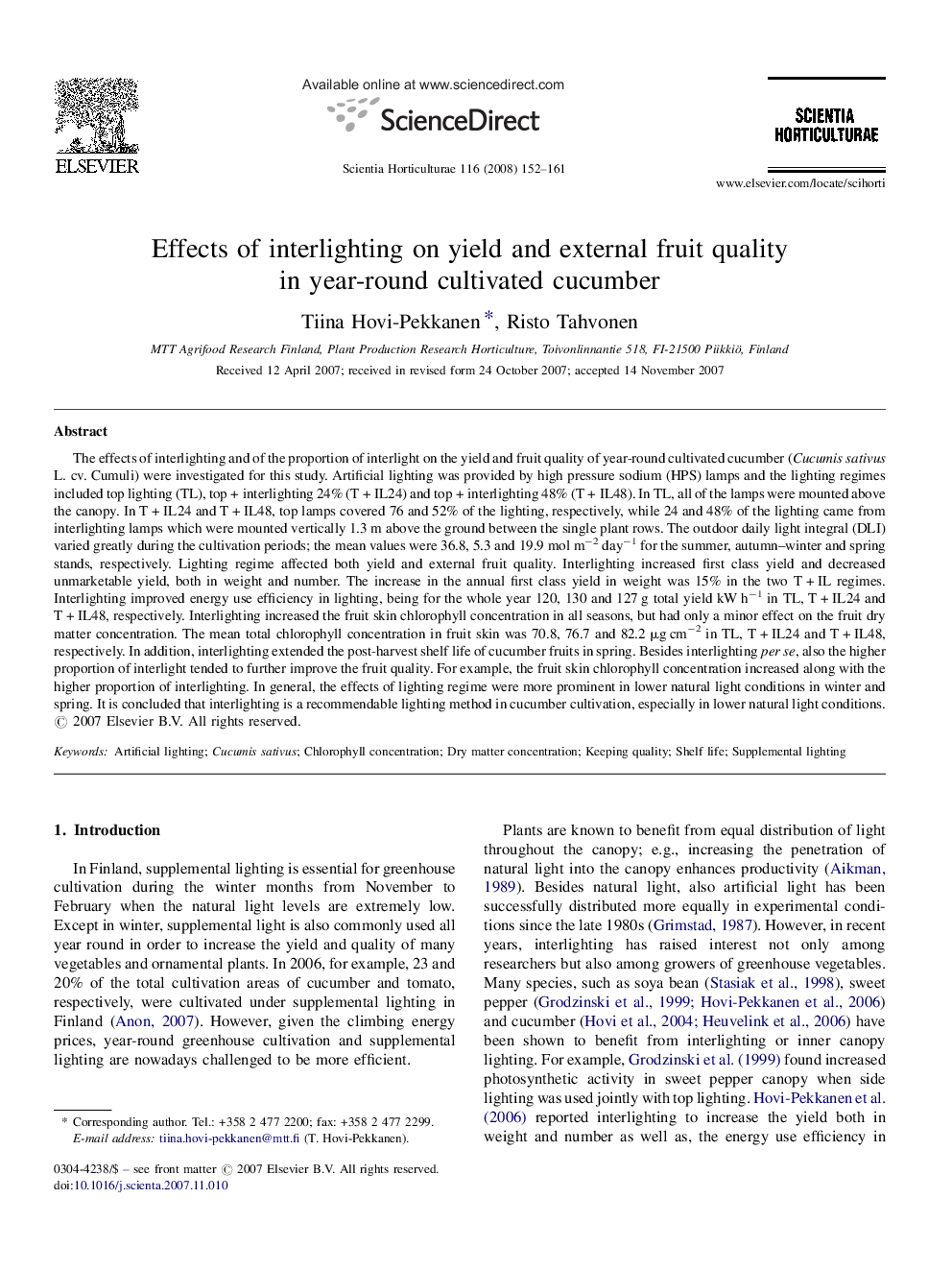| کد مقاله | کد نشریه | سال انتشار | مقاله انگلیسی | نسخه تمام متن |
|---|---|---|---|---|
| 4569783 | 1331355 | 2008 | 10 صفحه PDF | دانلود رایگان |

The effects of interlighting and of the proportion of interlight on the yield and fruit quality of year-round cultivated cucumber (Cucumis sativus L. cv. Cumuli) were investigated for this study. Artificial lighting was provided by high pressure sodium (HPS) lamps and the lighting regimes included top lighting (TL), top + interlighting 24% (T + IL24) and top + interlighting 48% (T + IL48). In TL, all of the lamps were mounted above the canopy. In T + IL24 and T + IL48, top lamps covered 76 and 52% of the lighting, respectively, while 24 and 48% of the lighting came from interlighting lamps which were mounted vertically 1.3 m above the ground between the single plant rows. The outdoor daily light integral (DLI) varied greatly during the cultivation periods; the mean values were 36.8, 5.3 and 19.9 mol m−2 day−1 for the summer, autumn–winter and spring stands, respectively. Lighting regime affected both yield and external fruit quality. Interlighting increased first class yield and decreased unmarketable yield, both in weight and number. The increase in the annual first class yield in weight was 15% in the two T + IL regimes. Interlighting improved energy use efficiency in lighting, being for the whole year 120, 130 and 127 g total yield kW h−1 in TL, T + IL24 and T + IL48, respectively. Interlighting increased the fruit skin chlorophyll concentration in all seasons, but had only a minor effect on the fruit dry matter concentration. The mean total chlorophyll concentration in fruit skin was 70.8, 76.7 and 82.2 μg cm−2 in TL, T + IL24 and T + IL48, respectively. In addition, interlighting extended the post-harvest shelf life of cucumber fruits in spring. Besides interlighting per se, also the higher proportion of interlight tended to further improve the fruit quality. For example, the fruit skin chlorophyll concentration increased along with the higher proportion of interlighting. In general, the effects of lighting regime were more prominent in lower natural light conditions in winter and spring. It is concluded that interlighting is a recommendable lighting method in cucumber cultivation, especially in lower natural light conditions.
Journal: Scientia Horticulturae - Volume 116, Issue 2, 4 April 2008, Pages 152–161